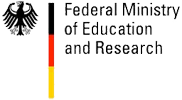| Research Mission: |
Creation of high-quality content for virtual environments has become a major bottleneck in movie and game productions. Large collections of 3D objects are already available, however, these objects rarely fit into a specific scenario and need to be manually adapted to meet artistic and technical constraints which is, even with modern design tools, a tedious task that requires elaborated artistic and technical skills. Our goal is to develop data-driven techniques that allow novice users to create appealing 3D objects or assist experienced artists to generate high-quality content faster.
A key challenge in data-driven modeling is to understand the structure of a 3D object. We seek to find formal models that reflect the structure of objects and allow structure-aware modification of existing objects or synthesis of new objects yielding a similar structure. Low-level cues like symmetry and regularity are crucially important for a shapes' appearance and thus are strong sources of information. However, they represent only a fraction of what humans would consider as structure. Consequently, we want to incorporate various aspects of 'structure' in our formal models such as semantic information from labeled training data or the interplay between different symmetries and regularities. We consider the search of a descriptive, compact, and applicable formal model as one of the fundamental challenges in the area of shape understanding.
Martin Bokeloh joined Google Inc. in 2013. |




